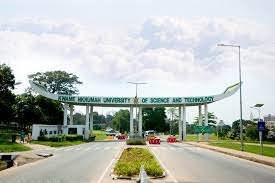KNUST cut-off Points are crucial in the admissions process at the University, Located in Kumasi, Ghana, the Kwame Nkrumah University of Science and Technology (KNUST) is a renowned public research university.
It was founded in 1952 and is well known for emphasizing STEM (science, technology, engineering, and mathematics) fields. A wide variety of undergraduate and graduate programs are available at KNUST, with a focus on international collaborations, innovation, and research.
The campus offers state-of-the-art amenities that support a thriving student body with a wide range of organizations and cultural events. The official KNUST website lists the qualifications for admission as well as the deadlines. As a result, KNUST is a preeminent university in the area, renowned for its academic standards and contributions to research and development.
Read Also: Study at the University of London: Admission, Tuition, Courses, Scholarships, Ranking in 2014
KNUST Cut-off Points 2024-2025

KNUST cut-off points are utilized in the admissions process to uphold academic standards, ensure fairness, and promote program suitability. These points create a transparent and competitive process, motivating students to strive for excellence.
Additionally, they contribute to efficient resource allocation, aligning with KNUST’s commitment to academic integrity and a high-quality education. Currently, KNUST cut-off points are 36 for WASSCE applicants and 24 for SSCE applicants. Applicants who don’t make the KNUST cut-off points will not be fit for admission.
Here are the KNUST cut-off points for each course:
| 1. BA. Akan Language and Culture | 24 |
| 2. B.Ed. Junior High School Specialism | 24 |
| 3. BA. Communication Design (Graphic Design) | 14 |
| 4. BA. Communication Studies | 12 |
| 5. BA. Culture and Tourism | 16 |
| 6. BA. Economics | 13 |
| 7. BA. English | 20 |
| 8. BA. French and Francophone Studies | 15 |
| 9. BA. Geography and Rural Development | 14 |
| 10. BA. History | 18 |
| 11. BA. Linguistics | 22 |
| 12. BSc. Fashion Design | 16 |
| 13. BSc. Ceramics Design Technology | 24 |
| 14. BSc. Metalsmithing and Jewellery Technology | 24 |
| 15. BSc. Textile Design and Technology | 18 |
| 16. BA. Integrated Rural Art and Industry | 19 |
| 17. BFA. Painting and Sculpture | 20 |
| 18. BA. Political Studies | 11 |
| 19. BA. Publishing Studies | 16 |
| 20. BA. Religious Studies | 24 |
| 21. BA. Sociology | 14 |
| 22. BA. Social Work | 15 |
| 23. BSc. Actuarial Science | 11 |
| 24. BSc. Aerospace Engineering | 09 |
| 25. BSc. Agribusiness Management | 18 |
| 26. BSc. Agricultural Biotechnology | 19 |
| 27. BSc. Agricultural Engineering | 16 |
| 28. BSc. Agriculture | 24 |
| 29. BSc. Aquaculture and Water Resources Management | 24 |
| 30. BSc. Architecture | 09 |
| 31. BSc. Automobile Engineering | 14 |
| 32. BSc. BDS (Dental Surgery) (Fee-Paying Only) | 08 |
| 33. BSc. Biochemistry | 10 |
| 34. BSc. Biological Science | 12 |
| 35. BSc. Biomedical Engineering | 07 |
| 36. Business Administration with a Bachelor’s Degree in Human Resource Management | 10 |
| 37. BSc. Business Administration (Marketing/International Business) | 12 |
| 38. BSc. Business Administration (Accounting/Banking and Finance) | 09 |
| 39. Business Administration with a focus on Supply Chain Management and Logistics (BSc). | 12 |
| 40. BSc. Hospitality and Tourism Management | 13 |
| 41. BSc. Chemical Engineering | 10 |
| 42. BSc. Chemistry | 18 |
| 43. BSc. Civil Engineering | 10 |
| 44. BSc. Computer Engineering | 09 |

Read Also: All 4 Colleges and Universities in Brooklyn, New York
| 45. BSc. Computer Science | 11 |
| 46. BSc. Construction Technology and Management | 14 |
| 47. BSc. Development Planning | 12 |
| 48. BSc. Disability and Rehabilitation Studies | 17 |
| 49. BSc. Electrical/Electronic Engineering | 07 |
| 50. BSc. Environmental Sciences | 17 |
| 51. BSc. Food Science and Technology | 14 |
| 52. BSc. Forest Resources Technology | 24 |
| 53. BSc. Geological Engineering | 13 |
| 54. BSc. Geomatic (Geodetic) Engineering | 14 |
| 55. BSc. Herbal Medicine | 16 |
| 56. BSc. Human Biology (Medicine) | 06 |
| 57. BSc. Human Settlement Planning | 16 |
| 58. BSc. Industrial Engineering | 15 |
| 59. BSc. Land Economy | 09 |
| 60. BSc. Landscape Design and Management | 22 |
| 61. BSc. Marine Engineering | 12 |
| 62. BSc. Materials Engineering | 14 |
| 63. BSc. Mathematics | 18 |
| 64. BSc. Mechanical Engineering | 10 |
| 65. BSc. Medical Laboratory Technology | 08 |
| 66. BSc. Metallurgical Engineering | 16 |
| 67. BSc. Meteorology and Climate Science | 21 |
| 68. BSc. Midwifery | 10 |
| 69. BSc. Natural Resources Management | 20 |
| 70. BSc. Nursing | 09 |
| 71. BSc. Petrochemical Engineering | 09 |
| 72. BSc. Petroleum Engineering | 07 |
| 73. BSc. Physics | 21 |
| 74. BSc. Physician Assistantship | 07 |
| 75. BSc. Quantity Surveying and Construction Economics | 14 |
| 76. BSc. Real Estate | 13 |
| 77. BSc. Medical Imaging | 10 |
| 78. BSc. Physiotherapy and Sports Science | 14 |
| 79. BSc. Statistics | 16 |
| 80. BSc. Telecommunication Engineering | 11 |
| 81. Doctor of Optometry | 06 |
| 82. (DVM) Doctor of Veterinary Medicine | 15 |
| 83. LLB | 06 |
| 84. Pharm D (Doctor of Pharmacy) | 06 |

What’s Next After Meriting the KNUST Cut-Off Mark?
After meeting the KNUST cut-off points, the next steps typically involve the admissions process.
Here’s a general overview:
- Check Admission Status: After meriting KNUST cut-off points, monitor the KNUST admission portal or official communication channels to check your admission status. The university will provide information on whether you’ve been offered admission.
- Follow the Admission Guidelines: If admitted, follow the guidelines provided by KNUST for the next steps. This may include information on acceptance letters, registration processes, and required documents.
- Acceptance of Admission: If you receive an admission offer, you may need to formally accept it by a specified deadline. This often involves completing an acceptance form or paying an acceptance fee.
- Complete Registration: Once you’ve accepted the admission offer, follow the registration procedures outlined by the university. This includes course registration, payment of tuition fees, and submission of required documents.
- Orientation Programs: Participate in any orientation programs organized by KNUST. These programs provide valuable information about the university’s facilities, academic life, and support services.
- Explore Housing Options: If you require accommodation, explore the housing options provided by KNUST. Follow the application procedures for on-campus or recommended off-campus housing.
- Fulfill Any Additional Requirements: Adhere to any additional requirements specified by the university, such as health screenings, submission of medical records, or other pre-enrollment conditions.
- Attend Classes: Once registration is complete, attend classes and engage in academic activities per the university’s academic calendar.
Benefits of Studying at KNUST
Attending Kwame Nkrumah University of Science and Technology (KNUST) provides a wide range of advantages and a thorough educational experience. The university is renowned for its outstanding academic reputation, especially in the STEM fields, where it offers challenging courses and possibilities for cutting-edge research.
Modern facilities and a wide range of academic offerings at KNUST contribute to a well-rounded and highly regarded education worldwide. Beyond the classroom, KNUST promotes active campus life, community involvement, and networking opportunities for students. The university’s dedication to career placement and assistance improves the employability of its graduates.
All things considered, KNUST provides a vibrant atmosphere that blends academic rigor, possibilities for research, cultural diversity, and an emphasis on the holistic development of students. Applicants should endeavor to reach KNUST cut-off points.
Read Also: 10 List of Best WUE Schools and Their Tuition Costs
FAQ about KNUST Cut-off Points 2024/2025 – All Courses
Here’s a set of frequently asked questions (FAQ) about KNUST (Kwame Nkrumah University of Science and Technology) Cut off Points for all courses for the academic year 2024/2025:
Q1: What are KNUST cut-off Points?
A1: KNUST cut-off Points are the minimum academic scores required for admission into various undergraduate programs at Kwame Nkrumah University of Science and Technology for the 2024/2025 academic year.
Q2: How are KNUST cut-off Points determined?
A2: Cut-off Points are typically determined based on factors such as the number of applicants, available spaces in each program, and the overall academic performance of applicants.
Q3: Where can I find the KNUST cut-off Points for 2024/2025 for all courses?
A3: The official KNUST website or the university’s admissions portal will likely publish the cut-off Points for all courses. You can also check with the admissions office for the most accurate and up-to-date information.
Q4: When will the KNUST Cut off Points for 2024/2025 be released for all courses?
A4: The release date for Cut off Points may vary each year. Keep an eye on the official communication channels of the university, such as their website or admissions office, for announcements regarding the release date.
Q5: Can I appeal if my scores are slightly below the cut-off Points for my chosen course?
A5: Universities may have an appeal process for exceptional cases. Contact the admissions office for guidance on the appeals process and whether it’s applicable for the academic year in question.
Q6: Are there different cut-off Points for different courses?
A6: Yes, Cut-off Points can vary for different courses and faculties. It’s important to check the specific Cut-off Points for the course you are interested in.
Q7: Can I gain admission if my scores are above the cut-off Points for my chosen course?
A7: While meeting the cut-off Points is an essential criterion, admission is not solely based on scores. Other factors, such as the number of available spaces in the program and competition from other applicants, also play a role.
Q8: How can I calculate my total score for admission purposes for all courses?
A8: Total scores are usually calculated based on the relevant subjects for the course. Check the university’s admissions guidelines or contact the admissions office for information on score calculation.
Q9: Can international students check KNUST Cut-off Points for all courses?
A9: Yes, international students can typically access cut-off Points information. It’s advisable to check the international admissions section of the KNUST website or contact the international admissions office for details.
Q10: Where can I get more information if I have specific questions about KNUST cut-off Points for all courses?
A10: For specific inquiries, contact the KNUST admissions office directly. They will provide the most accurate and detailed information regarding cut-off Points for all courses for the 2024/2025 academic year.
Conclusion
Kwame Nkrumah University of Science and Technology (KNUST) cut-off points are used as a critical component of its admissions procedure. By maintaining academic standards, these KNUST cut-off points guarantee that accepted students reach or exceed a predefined competency level.
KNUST cut-off points support an equitable and transparent admissions procedure in addition to upholding the academic programs’ integrity. This creates a competitive atmosphere that inspires students to pursue excellence.
The implementation of cut-off points is consistent with KNUST’s mission to deliver a top-notch education and equip students for success in their chosen fields. Additionally, it makes resource allocation more efficient and guarantees that admitted students are ready for their academic endeavors.
In the end, the KNUST cut-off points represent a strategic approach to admissions, fusing academic rigor with efficiency, justice, and diversity to choose a competent and diverse student body.
